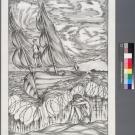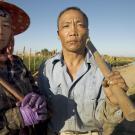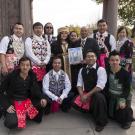Native Poetry, Art and Film: Voices of Northern and Southern California
RL.11-12.7, W.9-10.6, W.11-12.6, ELD.PI.9-10.2.Br, ACC.VA:RE8This unit introduces students to several Native cultures of the far northern and southern regions of California. Varied cultural expressions and life experiences are explored through poetry, reflective essay, art and film. These works illustrate: Native people’s connections to their environment and the world; the significance of ceremony and “home”; trauma, healing and hope for the future. The complexity of identity, Indigenous methods of land stewardship and the ongoing crisis of Missing and Murdered Indigenous Women are also addressed in multiple pieces. The teacher allows students to explore how these themes function throughout multiple works. Each work will be experienced to allow space for the expression of thoughts, feelings, and multiple interpretations. Students will closely examine the ways writers use structure, imagery, tone and cultural views to shape their work. As a culminating project, students will write poetry, a reflective essay, or create a visual art piece to express something culturally relevant to their experience. Technology, found objects and/or art supplies will assist the students in producing their work.







